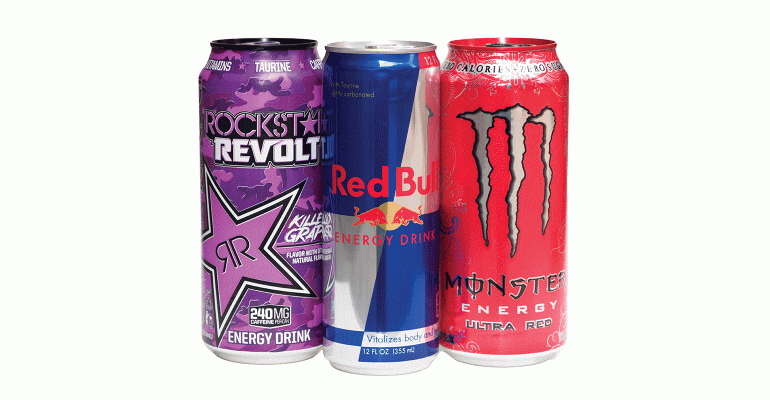Young consumers these days appear to be both working hard and playing hard, and that’s contributing to a big surge in energy drink sales.
Sales of energy drinks were up 20.5% across all retail outlets in the 52 weeks through April 17, according to IRI, and were the leading growth category among top-selling beverages in supermarkets, with a gain of 19.5%.
The surge in sales of these products could be attributed, in particular, to younger consumers, who are guzzling these products to help them power through long workdays, said Sally Lyons Wyatt, executive vice president and practice leader of client insights at IRI. According to an IRI consumer survey on snacking, 40% of respondents who drink energy drinks said they do so because they are working long hours.
Another reason: Young consumers are also spending more time playing video games, and energy drinks are a common accompaniment to this activity as well, Lyons Wyatt explained. Consumers surveyed by IRI also cited lack of adequate sleep as a reason for drinking energy drinks.
“I think energy drinks are serving different roles for different people,” she said.
Lyons Wyatt also noted that some new energy drink brands have introduced a variety of “clean” products to the category that tout natural ingredient formulations and challenging some of the established brands.
Bennett Morgan, senior vice president and chief merchandising officer at Grand Rapids, Mich.-based grocery distributor/retailer SpartanNash, agreed. Functional beverage sales overall have been “solid,” with a growing variety of products and uses, including energy and immunity as consumers seek added value from their beverages, he said.
“Health-conscious energy drinks continue to be positive due to increased demand from Gen Z and Millennials,” Morgan said.
Value options gain traction
While sales of some premium non-alcoholic beverages such as these have been performing well, Morgan said, sales of lower-priced items also remain strong, including carbonated soft drinks.
“We’ve also noticed a boost in sales of multi-serve beverages, which suggests that at-home dining trends continue to be strong,” he said.
Sales shifts in the beverage category can also be attributed to inventory constraints in some subcategories, including shelf-stable juices and isotonic beverages, Morgan added.
Alcoholic beverages had been up against strong sales comparisons while restaurants and bars were closed for on-premises dining — turning consumers to retail — but some bright spots remained.
SpartanNash’s own brands have been successful, as have other value brands, according to Morgan. Sales of pre-mixed and ready-to-drink cocktails have also been strong, he said.
Despite the inflationary pressures on consumers, premium and luxury wines priced above the $10-to-$20 range have been leading the wine category at SpartanNash.
“This tells us that people are still finding ways to elevate meals at home and celebrate special occasions with friends and family,” Morgan said. “Many of our stores have dedicated wine stewards who are incredibly knowledgeable with our wide selection and can provide educational moments by helping customers pair food with the dynamic flavors of wine and find their next treasure at any budget.”





